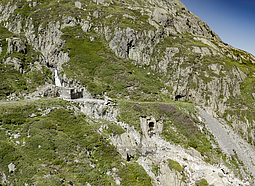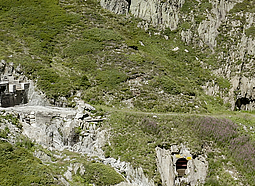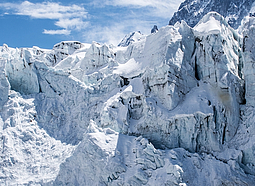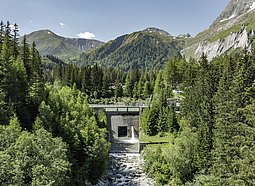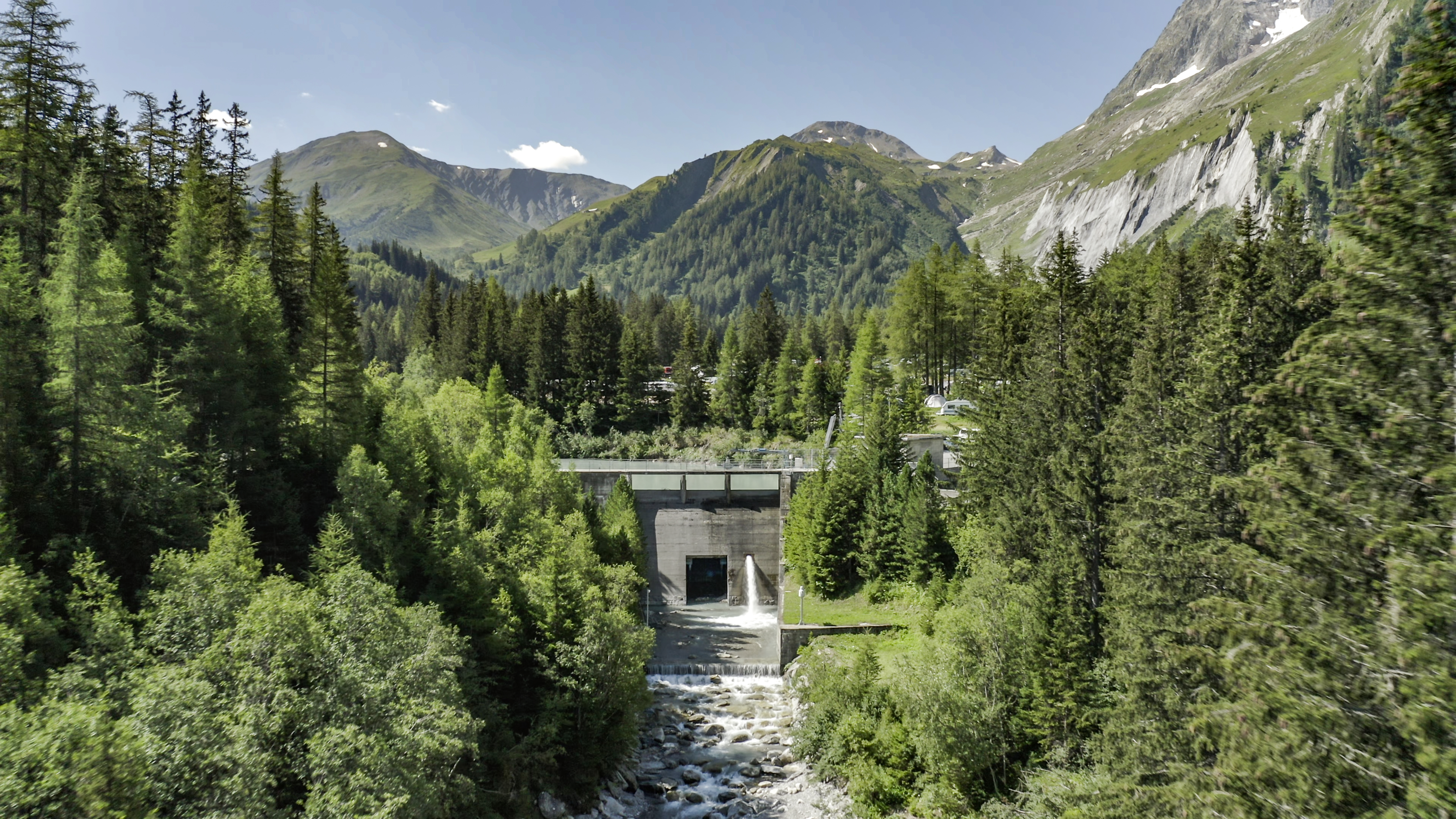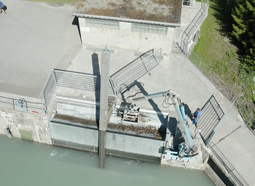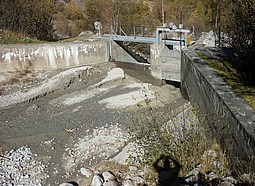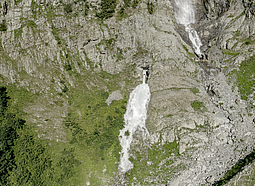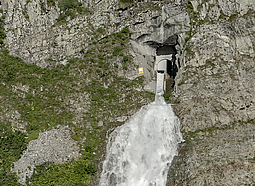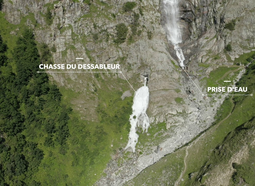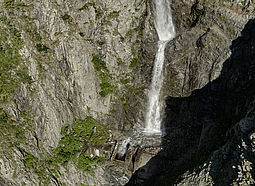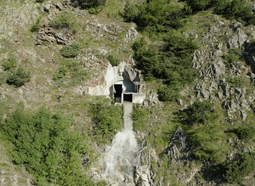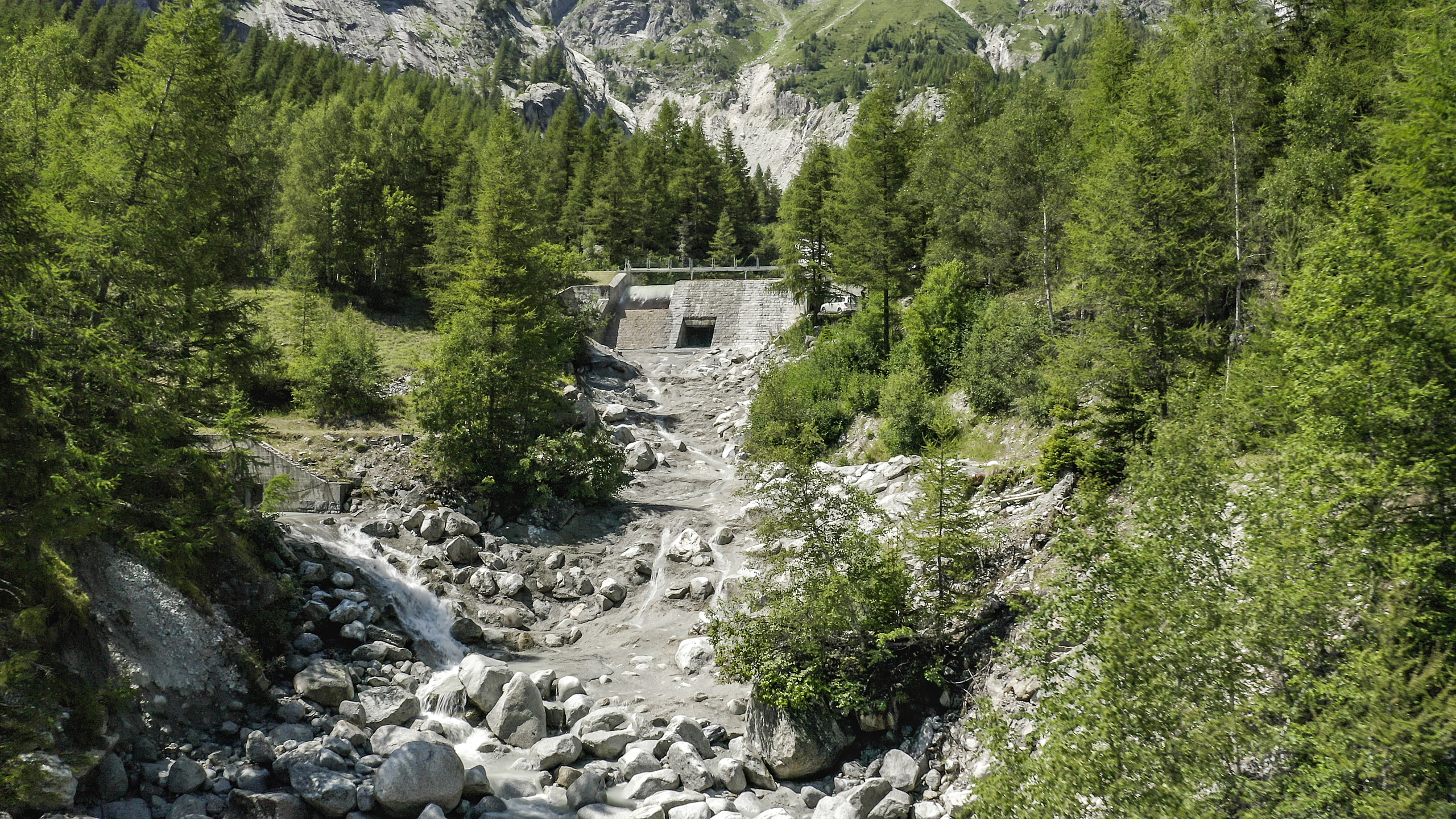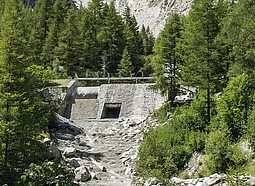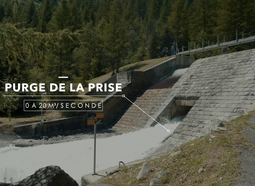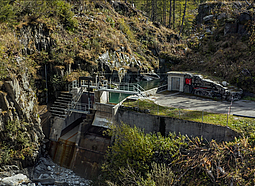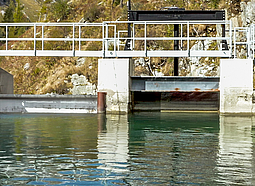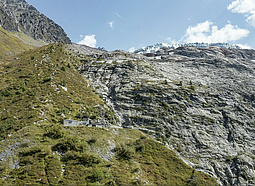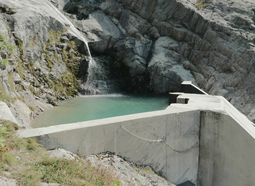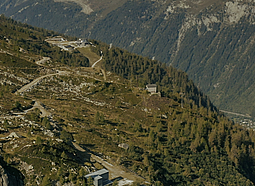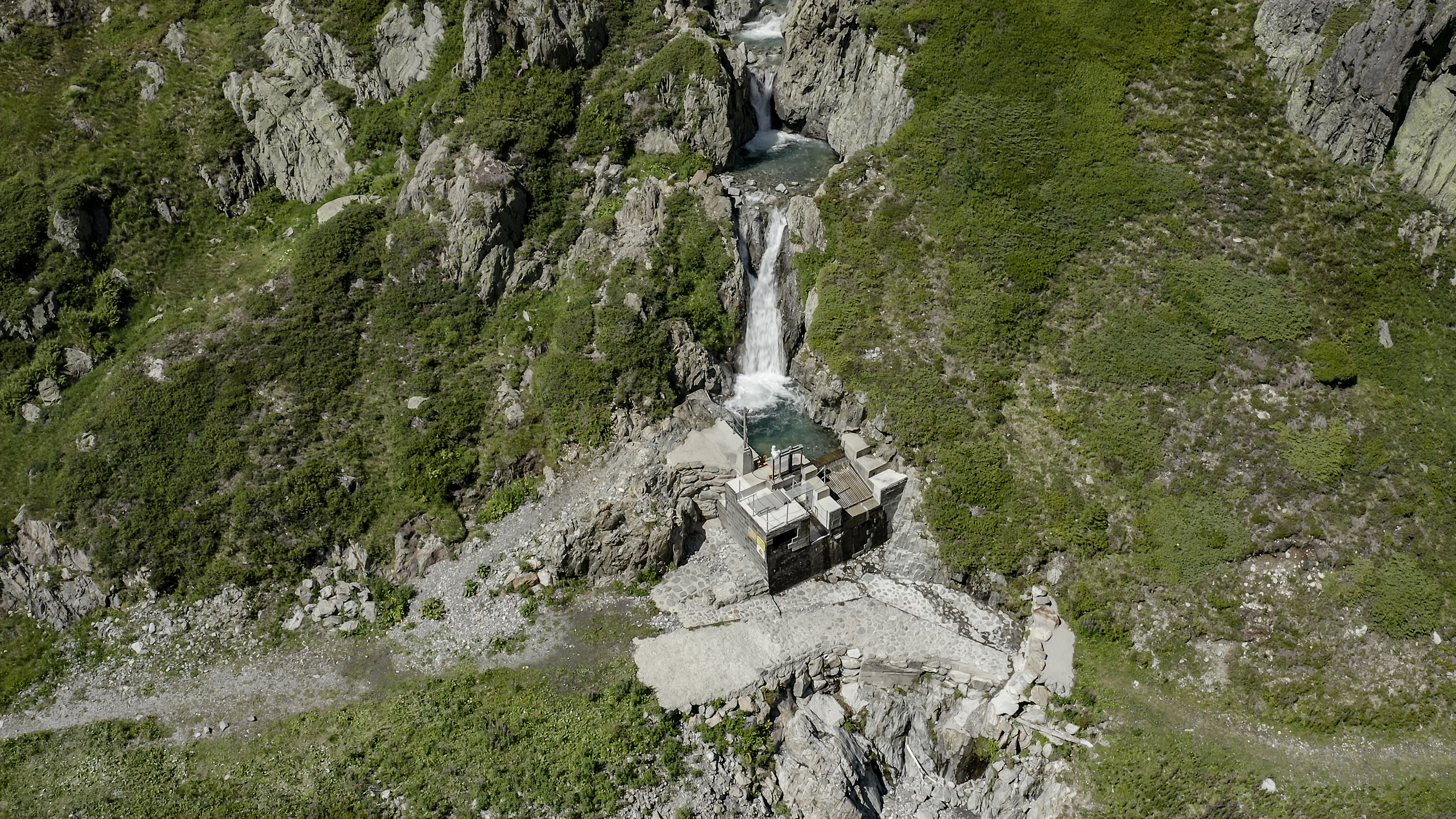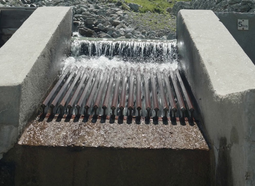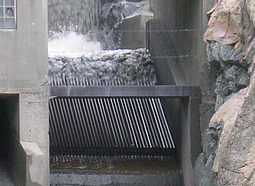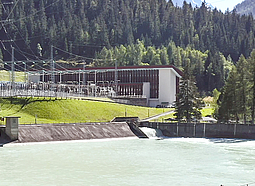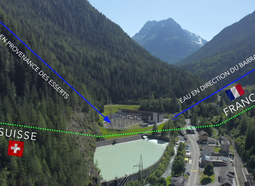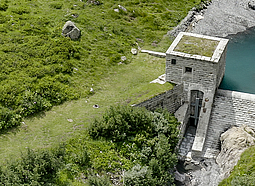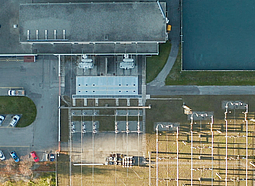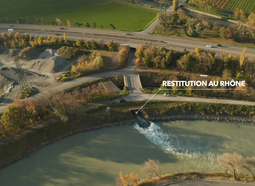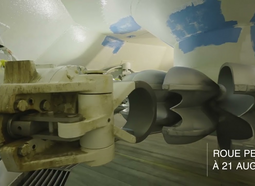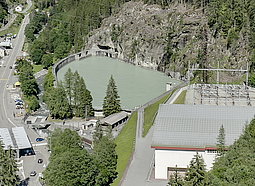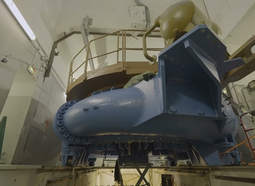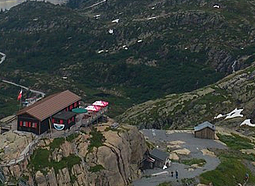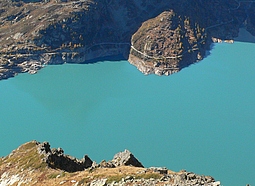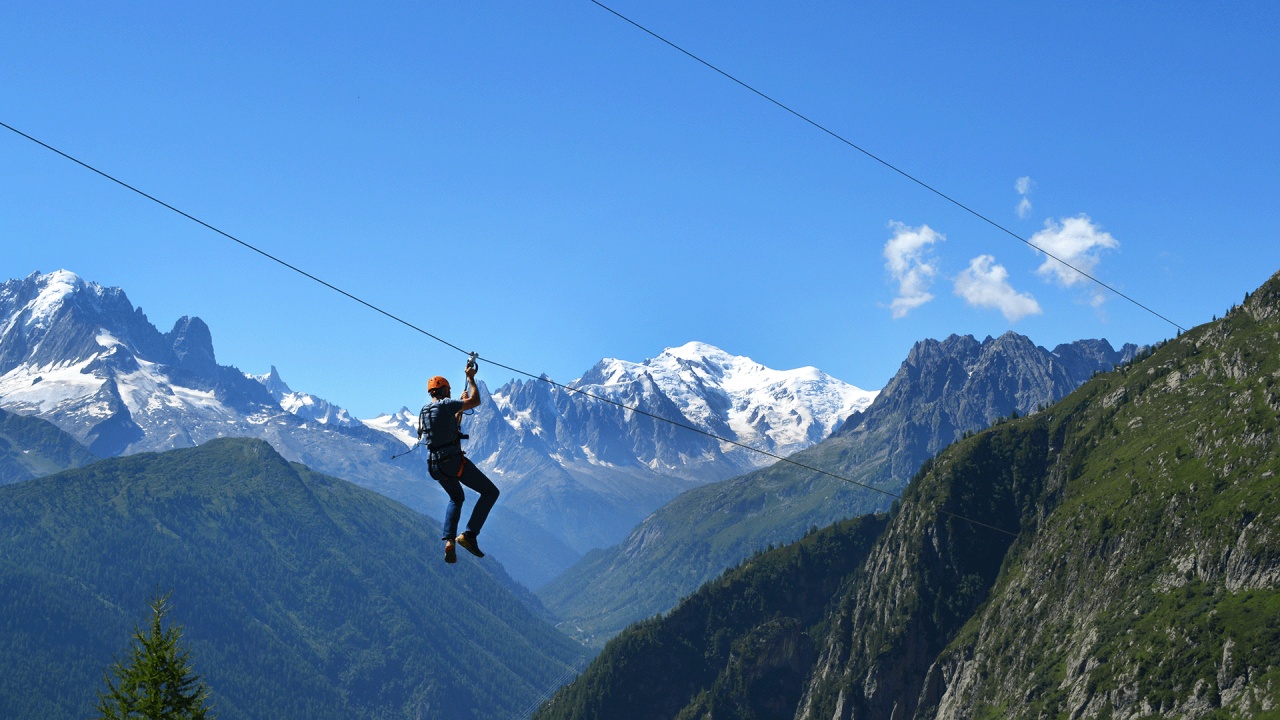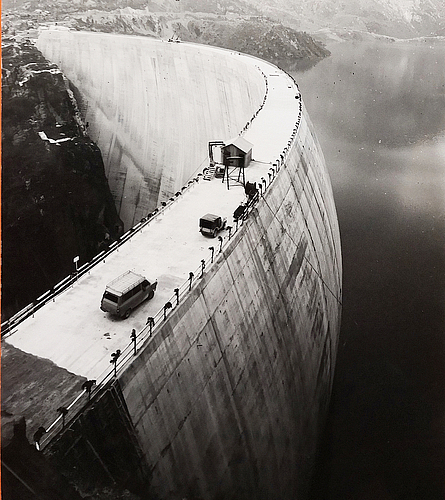The epic international journey of one of the largest dams in Europe
The use of hydropower in the region began long before the construction of the Emosson dam. Back in time
Barberine facility
1920 – 1927
1920 coincides with the start of construction of the Barberine facility by the Swiss Federal Railways (SBB). Plans for the dam are underway to meet the growing need for energy following the decision of the SBB in 1913 to electrify the entire Swiss railway network. SBB is also granted a concession by the Swiss Water Authority in 1917. Operations start in 1927.
Construction of the funicular railway
1920 – 1926
A funicular railway with an 87% gradient is designed to facilitate the transport of materials as well as workers over the Barberine plains. This new means of transport later turned into a tourist asset still in use in the region ! To achieve this Herculean task for future generations, no less than 206,000 m3 of concrete was transported across the Alps. On average, the 400 workers worked 11 hours a day and were able to pour a whole 700m3 of concrete in a single day. In the end, the Barberine dam is to have a height of 80 meters with a width at its base of 58 metres and a 4.5-metre wide crown stretching to 250 metres in length. The reservoir this created could hold 40 million m3 of water. Work was completed in 1926.
Vieux Emosson dam
1952 – 1955
In 1952, the demand for rail transport continues to grow, the network develops accordingly. Barberine was no longer sufficient to meet demand so it was decided to capture water from the neighbouring Nant de Drance valley and store it in a new reservoir which had been under construction since 1952. This is how Vieux Emosson, a vault dam (170m long and 45m high), was created in 1955. The reservoir is capable of holding 13.8 million m3 of water.
The idea for an Emosson dam is born
1952 – 1955
Since the early beginnings and the building of Barberine, the engineers were aware of the potential of the Barberine valley and that a much more important work could be created downstream of the plain. The only problem was finding enough water to fill it! The water catchment area itself did not receive enough water. Back at the beginning of the 20th century, it was technically and economically inconceivable to embark on the construction of the various collectors that make the Emosson facility what it is today.
The idea for the Emosson dam came back in the early 1950s through a preliminary project carried out by Mr Gross, an engineer from Salvan. It was a question of capturing the water from Dranse d’Entremont, Dranse de Ferret, Trient and Eau Noire to complete the intakes of the Barberine catchment area. A second draft was submitted to Electro Watt SA, the company which was building Mauvoisin and had good relations with EDF. This collaboration with Electro Watt SA was aborted in 1954 when the canton of Valais awarded the Mattmark concession to the latter, which led the firm to give up embarking on the major Emosson project. Finally, it took the intervention of Albert Maret, developer of Mauvoisin, who submitted the idea to Motor Columbus SA. This led to the creation of the company Usines hydroélectriques d’Emosson SA in 1954. Following various negotiations by Motor Columbus SA, Electricité de France (EDF) joined the company in 1955.
Administrative complications
1955 - 1961
The mammoth Emosson dam project was allowed to see the light of day ! But first came several long years of paperwork and administrative procedures between the two countries before the laying of the first stone. And in the meantime, two events almost put an end to the project :
1. The spiralling constructions costs.
2. The move towards nuclear power over hydropower.
Interest in hydropower returned and it was decided to continue its use. This is because it is ideal for covering shortages and compensating for extraordinary events. High quality energy providing operating reserves.
In 1962 the company Atel (Aar et Tessin SA) became affiliated with the company so there was 50% French stake represented by EDF and 50% Swiss stake represented by Motor Columbus (25%) and Atel (25%).
Before being able to lay the first stone, it was necessary to obtain the agreement of SBB to submerge their Barberine dam in 42m of water. This was granted under two conditions: firstly that Usines hydroélectriques d’Emosson SA guarantee them a lump sum energy credit and secondly that an accumulated volume, freely usable, be reserved for them for the rest of their concession. In 1961, SBB signed an agreement in principle which had the effect of extending their federal and municipal concessions until 2017.
Moving of the Franco-Swiss border
1961 - 1967
Yet another weighty detail needed to be sorted out : the moving of the Franco-Swiss border ! This exchange of territory allowed the dam wall to be entirely on Swiss soil and the Châtelard-Vallorcine power station entirely on French soil. This was achieved when the two countries signed the convention of 23 August 1963.
Finally, the French concession decree was signed by Charles De Gaulle on 30 December 1966. In 1967, Usines hydroélectriques d’Emosson SA became Electricité d’Emosson SA (ESA) and obtained the approvals of the Swiss and French concessions until 30 September 2055.
It was not until 19 April 1967 that the construction of the dam was approved.
Construction
1967 - 1975
Once construction of the dam was approved, work began on 15 July 1967. The first round of concrete was poured in September 1969, the last in August 1973. The dam entered service on 1July 1975. The estimated cost of construction in 1973 was 650 million Swiss francs.
Start of operations
From 1975 to today
In 1975, the operating staff is distributed as follows : 20 operating staff, 14 at La Bâtiaz and 6 at Vallorcine ; in addition, there is the operations manager, his French assistant, two technicians and a secretary. Management is not on site. EDF provides the company with operating staff and on the Swiss side, Atel contracts the workforce.
The facilities of the development are 65% on Swiss soil and 35% on French soil to create an indivisible whole managed from La Bâtiaz power plant in Switzerland.
The operating account is opened on 1October 1977. On this date, Motor Columbus SA withdraws and cedes its stake to Atel. Thus, the company becomes 50% owned by EDF and 50% owned by Atel.
In December 2008, the merger of Atel and EOS gives birth to the Alpiq Group. From then on, ESA is a company of equal partners : EDF and Alpiq.
In 2015, we celebrated the 40th anniversary of the facility, a symbolic date representing the midway point of the length of the concession !
Arrival of Nant de Drance
A new power station under construction since 2008
Back in 1971, the SBB owners of the Vieux Emosson dam had the idea of building a pumped storage facility between the two dams to exploit the difference in altitude between the two reservoirs.
At the beginning of the 1970s, however, the project appeared to be premature from an economic point of view given the scale of the project, the energy needs in Switzerland and the remoteness of the facility both from sources of pumping energy and major centres of power consumption.
It is not until the 2000s that the project saw the light of day again due to growing peak electricity needs, particularly in summer due to the increased use of air conditioning. After years of studies, a concession and planning permission were granted in August 2008. Work began quickly on 10 September 2008 and a new company was created for the construction and operation of the Nant de Drance pumping station. In doing so, a further step was taken to guarantee the future power supply to Switzerland and public transport.
Discussions were then undertaken between the companies Electricité d'Emosson SA (owner of the Emosson dam), SBB (owners of the Vieux Emosson dam) and Nant de Drance SA (in charge of the construction of the new power plant) in order to agree on the future operating conditions of the three facilities, which together share the same water reservoir formed by the Emosson dam.
The facility was officially put into operation on 1 July 2022 and its opening ceremony took place on 9 September 2022.

